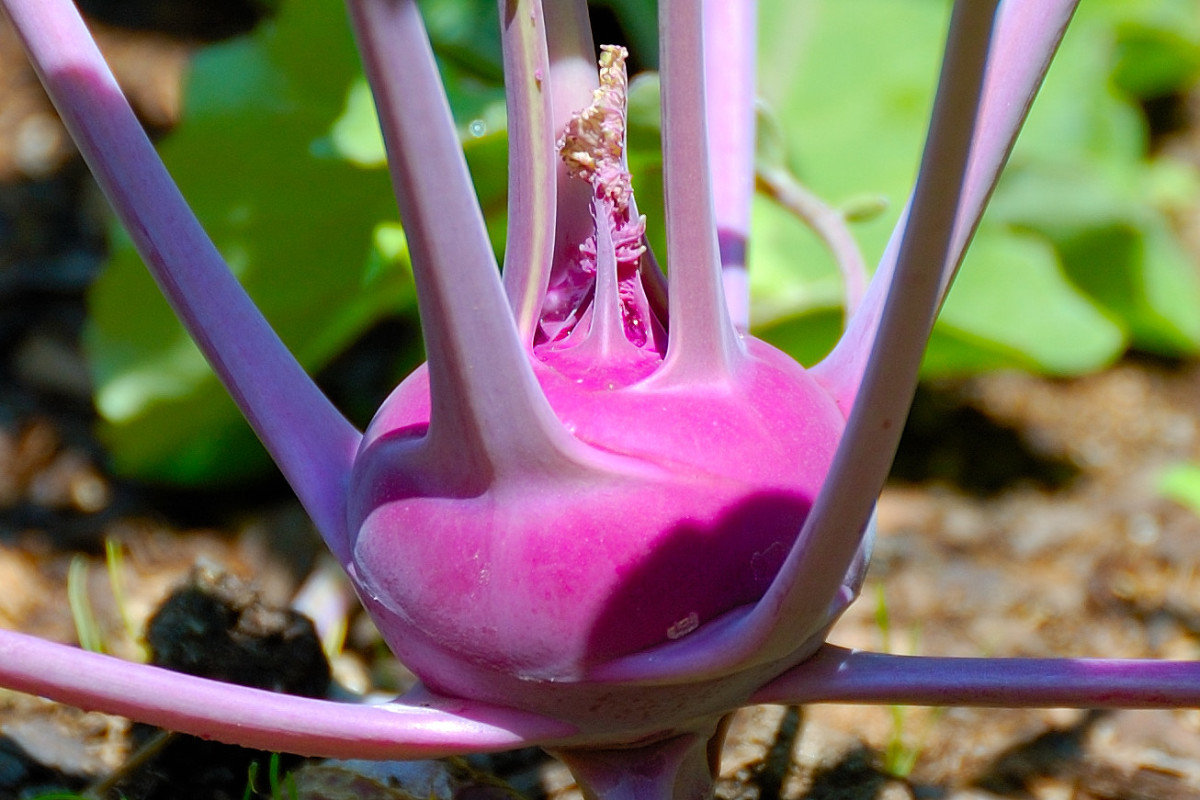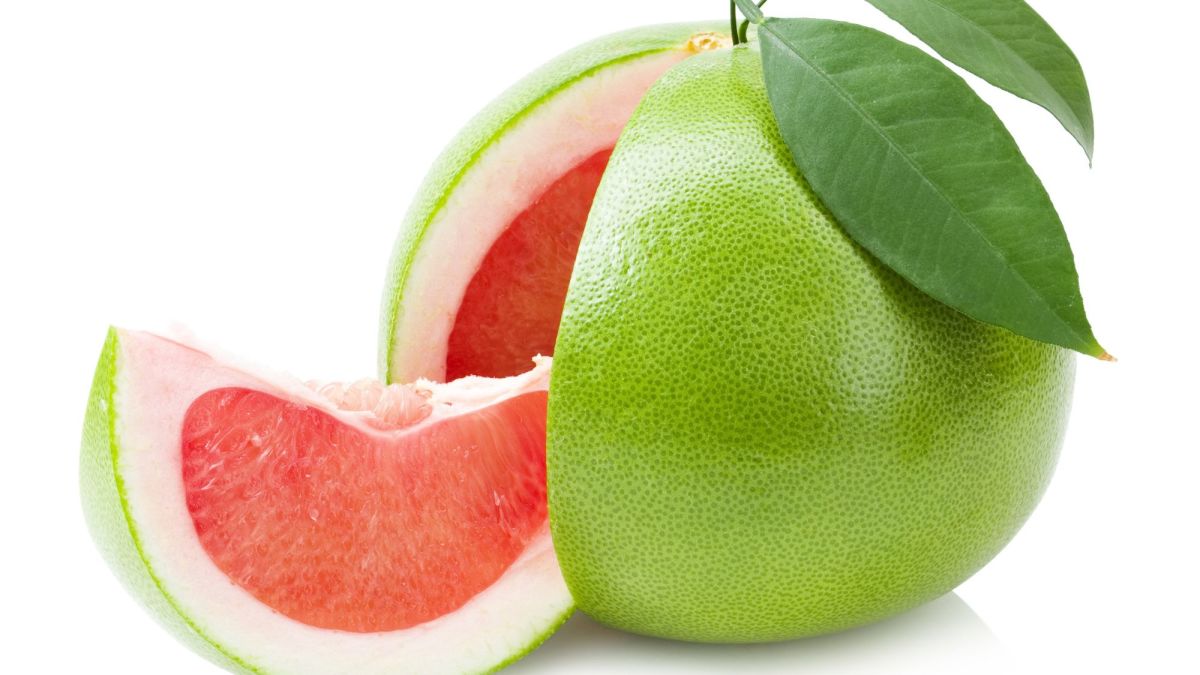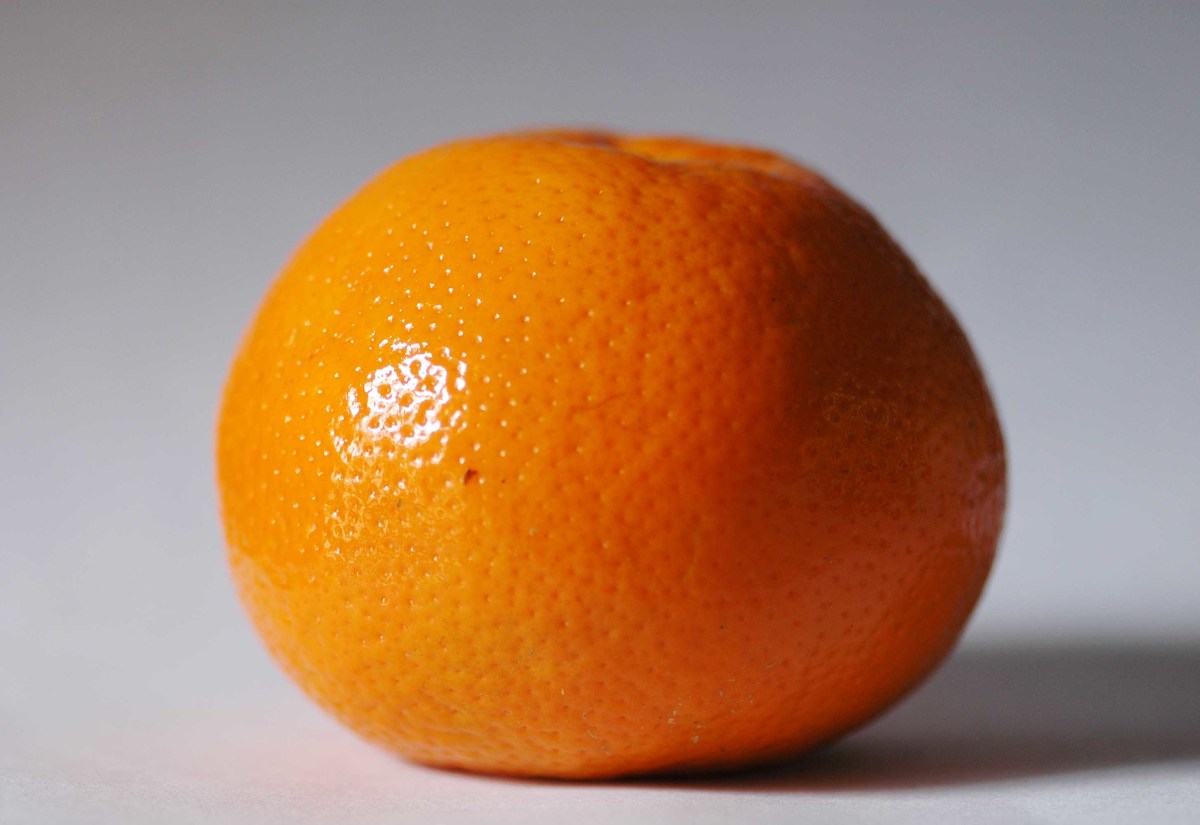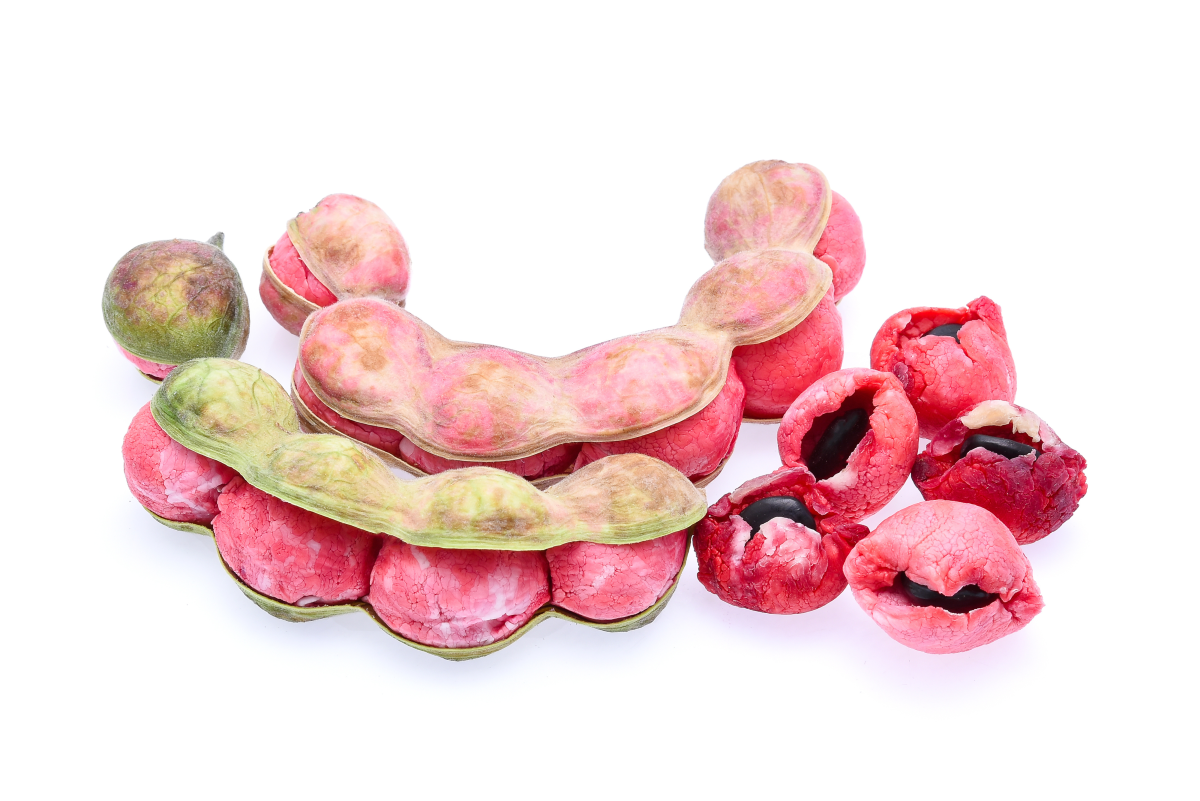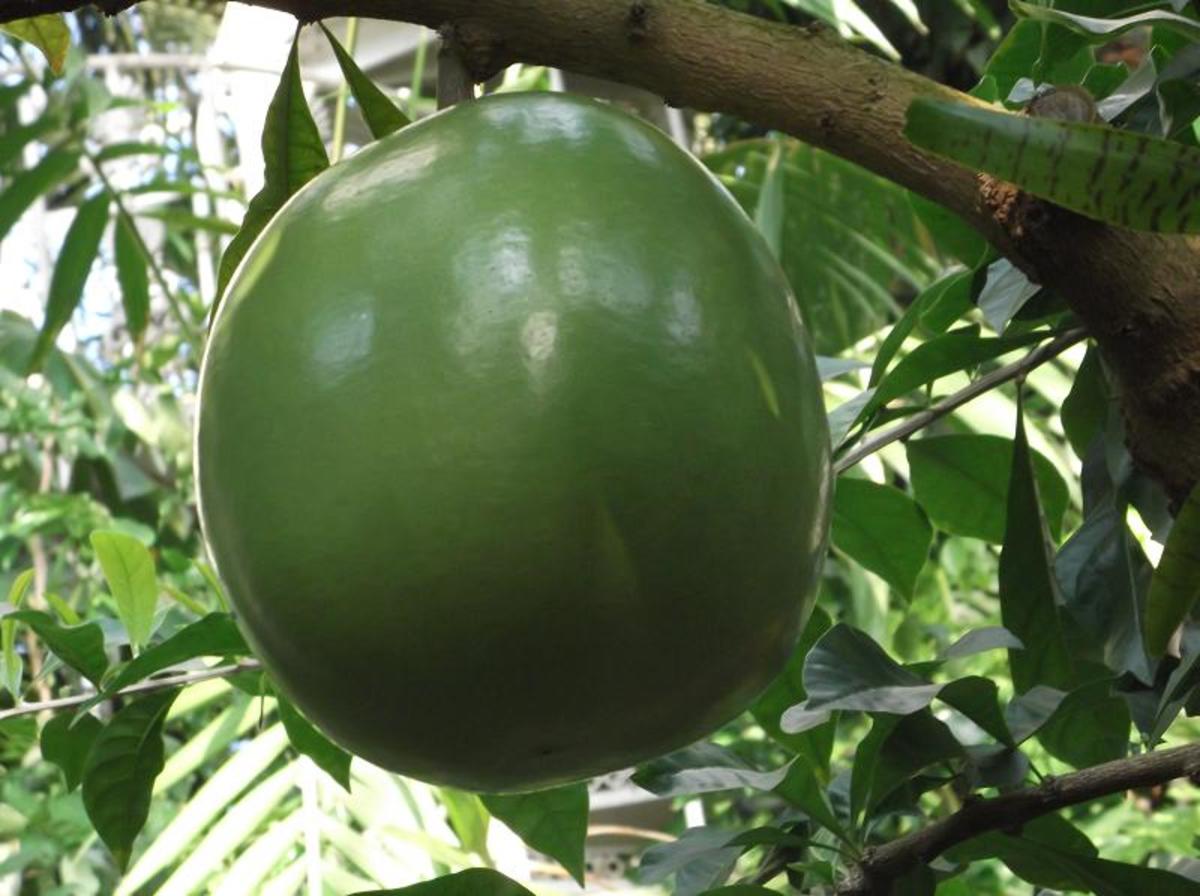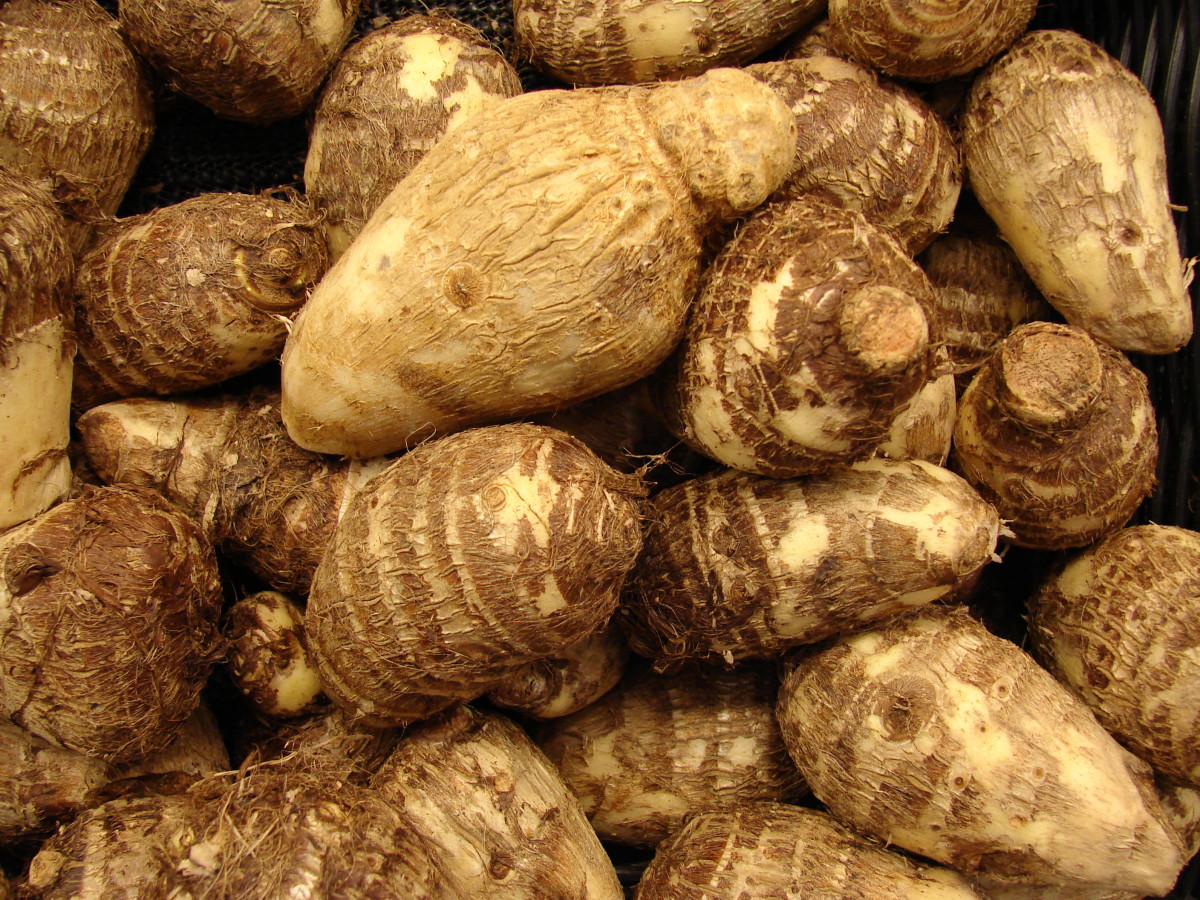Pomelo...Very Large Grapefruit or Something Else?
Some believe pomelo, also spelled pommelo, pummelo, or pulmetto is a very large grapefruit. It’s not. It is a member of the Rutaceae or citrus family, which includes grapefruit, tangerine, tangelo, lime, lemon, and clementine. Obviously, there are lots of similarities between pomelo and grapefruit. But there are differences too.


Physical Similarities and Differences between Pomelo and Grapefruit
Pomelo
Pomelo’s botanical name is Citrus maxima or Citrus grandis. Depending on variety, it can be round or pear-shaped with thick, minutely-rough but soft-to-the-touch, yellow-green rind. Its average diameter is 12 inches (could be as low as four) and it can weigh as much as 25 pounds. The pale pink to rose-colored pulp is segmented with thick, creamy, bitter-tasting albedo or pith. The 11 to 18 segments are sweet but sometimes tart or tangy, juicy but sometimes dry, seedless but sometimes seed-full. Pomelos also have a wonderfully citrus fragrance.
Grapefruit
Grapefruit’s botanical name is Citrus paradisi. It’s also round but has a yellow-green, thin rind. Depending on variety, some rinds have slightly reddish hue. Grapefruit has a diameter between four and six inches and an average weight of less than one pound. The white, yellow, pinkish, or blood-red pulp is segmented with thin, creamy, bitter-tasting pith. The 11 to 12 segments are sweet but sometimes tart, tangy, or bitter, juicy but sometimes dry, and seedless but sometimes full of seeds. Grapefruits’ fragrance isn’t as strong as pomelos’.
Similarities and Differences in the Nutritional Profiles of Pomelo and Grapefruit
Pomelo
Like all citrus fruits, pomelo has an abundance of vitamin C, dietary fiber, and water. It’s also a great source of vitamins A and B-6/ pyridoxine; minerals potassium, magnesium, and phosphorus; the antioxidant beta-carotene and other antioxidant flavonoids; small amounts of vitamin B-3/ niacin and minerals calcium, iron, sulfur, and zinc. It’s also low in sugar and calories.
Grapefruit
Grapefruit adds vitamin A to its bank of abundance citrus nutrients. There are also reliable quantities of vitamins B-1/ thiamin, B-2/ riboflavin, B-3/ niacin, B-5/ pantothenic acid, B-9/ folate, choline, and E; minerals manganese, potassium, phosphorus, zinc, and copper; antioxidants lycopene, beta-carotene, limonoids, and naringenin (the red varieties of grapefruit show higher antioxidant quantities). And it’s also low in sugar and calories.


Similarities and Differences in the Health Benefits of Pomelo and Grapefruit
Pomelo
In Brazil, some folks use the bark and sap of the pomelo tree to create cough medication. And regions of Asia have been known to use the leaves to treat skin ailments. The vitamin C in the fruit’s pulp works along with other antioxidant compounds to boost the function of our immune system; remove harmful free radicals which can damage our cells; fight the viral, bacterial, and fungal agents responsible for colds, flus, other respiratory ailments, inflammations, allergies, urinary tract infections, and cancer. Vitamin C also slows the aging process, reducing signs like wrinkles and age spots. It plays a role in the production of collagen, which strengthens our tissues, and repairs sun and pollution damage. Overall, it promotes healthy skin and hair along with vitamin A, minerals sulfur, calcium, iron, and zinc, and water.
The mineral potassium helps increase our blood circulation; regulate our blood pressure; reduce bad cholesterol, and relax our heart and blood vessels. The latter enables us to ward off diseases such as heart attacks, strokes, and atherosclerosis. Potassium also helps maintain strong bones and regulate the balance of the body’s fluid, keeping issues like osteoporosis, cramping, and muscular injury at bay.
The beta-carotene and other antioxidant flavonoids helps to lower the risk of several cancers, including pancreatic, intestinal, and colon.
The dietary fiber helps maintain healthy digestion and digestive tract by promoting regular bowel movements and stimulating gastric fluids. It also decreases the risk of diabetes and colon cancer. Combined with pomelo’s water, dietary fiber aids in weight loss as well.
Grapefruit
Similarly, grapefruit’s vitamin C and potassium as well as the antioxidant lycopene help us prevent colds, flus, respiratory and allergy infections, inflammations, and cancer. They enhance our immune system and eliminate harmful free radicals. The vitamin C also decreases signs of aging, produces collagen, and along with the citrus fruit’s vitamin A, B-complex, minerals, and high water content, help promote hair growth and healthy skin.
The potassium and dietary fiber provide the same benefits as they do in pomelo. The beta-carotene, limonoids, and other the antioxidant phytonutrients lower the risk oral, breast, esophageal, colon, and prostate cancer.
The Tufts University School of Nutrition Science and Policy, Massachusetts along with Nutrition Programmes Service, Food and Nutrition Division, Rome co-wrote an article, which included studies conducted on the nutritional benefits of citrus fruits.
What Are the Side Effects of Pomelo and Grapefruit?
Pomelo
People with liver and kidney diseases, breast cancer, low blood pressure, those taking drugs for seizures, depression and other psychiatric issues, high blood pressure, blood thinners, gastro-esophageal reflux disease/ GERD, and postmenopausal women should exercise extreme caution when consuming pomelo and in some cases, avoid it altogether.
Grapefruit
Since grapefruit also has high quantities of vitamin C and potassium, patients with the diseases and drug consumption listed above should also stay clear of grapefruit.
Medical Disclaimer
Note this article is strictly for information. Consult your professional health provider before consuming pomelo or grapefruit to treat any of the health issues mentioned.
Vegan Pomelo Salad by Allen Tan
Strawberry Grapefruit Smoothie Recipe by Shira Bocur
Grapefruit
Preparing, Eating/ Cooking, Purchasing, and Storing Pomelo and Grapefruit
Pomelo
This citrus fruit can be eaten raw/ fresh, as a snack, in salads, used to make jams, jellies, marmalades, juices, syrups, desserts, or as an ingredient in Asian cuisine. Matter-of-fact, pomelo’s quite a popular ingredient in Asian cooking.
Grapefruit
Grapefruit is pretty much prepared and eaten as pomelo.
Pomelos may be more difficult to find than grapefruit in United States (U.S.) produce stores, farmer’s markets, and supermarkets. So, be sure to also check the Asian markets. Bruised or spotted skins will not affect taste and texture, but wrinkled fruits will. The perfect pomelo or grapefruit is firm and a bit spongy. Both can remain in the refrigerator for a week or two.

Brief Notes on the Cultivation of Pomelo and Grapefruit
Pomelo
Pomelo prefers organically-rich, well-drained, but watered soil. Mud, clay, limestone is perfectly fine. It grows in tropical and semi-tropical environments such as east Asia, the Caribbean, and in the U.S.: Florida, Texas, Arizona, and California. A typical tree reaches a height of 16 to 50 feet. Harvest, at least in U. S., is from November to June. Pomelo varieties include Melogold, Oroblanco, Chandler, White Dwarf, Double, and Hirado. Pomelos may grow in clusters.
Grapefruit
Grapefruits soil-types, preferred environments, and harvest season are like pomelos’. They grow primarily in Central and South America, the Caribbean, South Africa, Israel, Morocco, and in the U.S., mostly Florida and Texas. In fact, Florida is said to be the largest producer of grapefruits. A typical tree can reach a height of 20 feet. Varieties include Ruby red, Pink, Thompson, White Marsh, and Duncan. Grapefruits grow in clusters.
Pomelo VS Grapefruit
Which Do You Prefer?
Brief History of Pomelo and Grapefruit
Pomelo
Pomelo, believed to be native to southeast Asia, has been around for centuries. The Chinese believe the citrus fruit brings good fortune and is therefore a must-have at New Years. In the 17th century, a sea captain (some say he was French, others say he was English) introduced pomelo to the Caribbean where it is known as shaddock.
Grapefruit
Botanists believe grapefruit is a hybrid of orange and pomelo. They say the union first occurred in Indonesia in the 17th century. The citrus fruit got its name from the Jamaicans (Caribbean). They named it grapefruit because of its grape-like clusters. Grapefruit was introduced to Jamaica in the 18th century and Florida in early 19th century.




